一、摘要
spring security除了可以在配置文件中配置权限校验规则,还可以使用注解方式控制类 中方法的调用。
例如controller中的某个方法要求必须具有某个权限才可以访问,此时就 可以使用spring security框架提供的注解方式进行控制。
二、实现步骤
2.1 在配置类中添加权限注解的支持
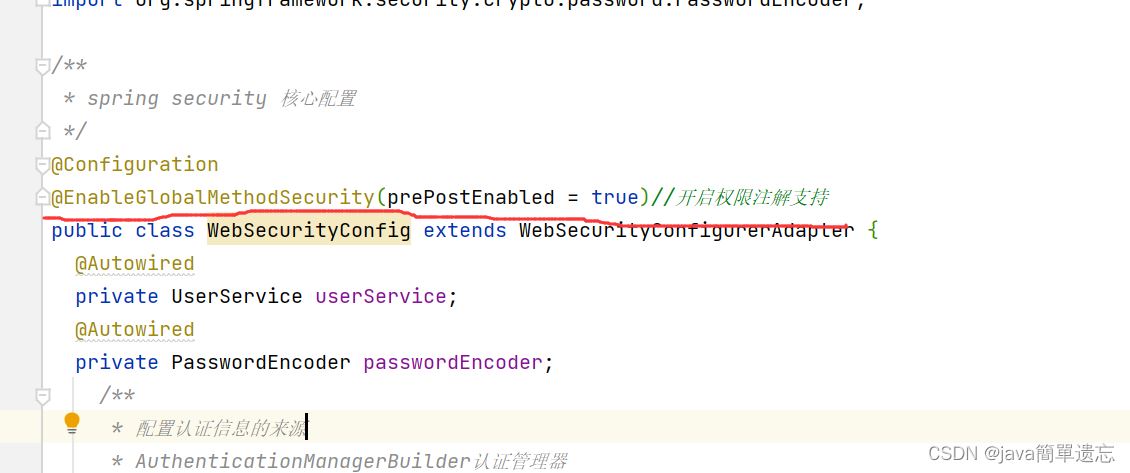
package com.by.config;
//import com.by.service.userservice;
import com.by.service.userservice;
import org.springframework.beans.factory.annotation.autowired;
import org.springframework.context.annotation.bean;
import org.springframework.context.annotation.configuration;
import org.springframework.security.config.annotation.authentication.builders.authenticationmanagerbuilder;
import org.springframework.security.config.annotation.method.configuration.enableglobalmethodsecurity;
import org.springframework.security.config.annotation.web.builders.httpsecurity;
import org.springframework.security.config.annotation.web.builders.websecurity;
import org.springframework.security.config.annotation.web.configuration.websecurityconfigureradapter;
import org.springframework.security.crypto.bcrypt.bcryptpasswordencoder;
import org.springframework.security.crypto.password.passwordencoder;
/**
* spring security 核心配置
*/
@configuration
@enableglobalmethodsecurity(prepostenabled = true)//开启权限注解支持
public class websecurityconfig extends websecurityconfigureradapter {
@autowired
private userservice userservice;
@autowired
private passwordencoder passwordencoder;
/**
* 配置认证信息的来源
* authenticationmanagerbuilder认证管理器
*/
@override
protected void configure(authenticationmanagerbuilder auth) throws exception {
// 配置认证提供者
auth.userdetailsservice(userservice).passwordencoder(passwordencoder);//配置认证提供者
super.configure(auth);//密码
}
/**
* 配置web的安全(忽略的静态资源)
*
* @param web
* @throws exception
*/
@override
public void configure(websecurity web) throws exception {
//web.ignoring().antmatchers("/pages/a.html","/pages/b.html");
//web.ignoring().antmatchers("/pages/**");
//指定login.html页面可以匿名访问
web.ignoring().antmatchers("/login.html");
}
/**
* 配置http请求的安全(认证、授权、退出)
* httpsecurity 用于构建一个安全过滤器链 securityfilterchain
*
* @param http
* @throws exception
*/
@override
protected void configure(httpsecurity http) throws exception {
// super.configure(http);
http.formlogin()
.loginpage("/login.html")// 默认页面
.loginprocessingurl("/login")//请求
.usernameparameter("username")
.passwordparameter("password")
// 请求成功后访问哪个路径
.defaultsuccessurl("/index.html",true);
//权限配置
http.authorizerequests()
//.antmatchers("pages/a.html").authenticated()
.antmatchers("/pages/b.html").hasauthority("add")
/**
* 拥有role_admin可以访问d页面
* 注意:此处虽然写的是admin,但是框架会自动添加前缀role_
*/
.antmatchers("pages/c.html").hasrole("admin")
// 其他资源均需要登录后访问
.anyrequest().authenticated();
// super.configure(http);
//关闭跨站请求防护
http.csrf().disable();
}
/**
* 配置加密对象
* @return
*/
@bean
public passwordencoder passwordencoder(){
return new bcryptpasswordencoder();
}
}2.2 创建controller类
在controller的方法上加入注解进行权限控制
package com.by.controller;
import org.springframework.security.access.prepost.preauthorize;
import org.springframework.web.bind.annotation.requestmapping;
import org.springframework.web.bind.annotation.restcontroller;
@restcontroller
@requestmapping("/hello")
public class hellocontroller {
@requestmapping("/add")
/**
* 表示用户要拥有add权限 才能访问该方法
*/
@preauthorize("hasauthority('add')")
public string add(){
system.out.println("add");
return "success";
}
}2.3 userservice类
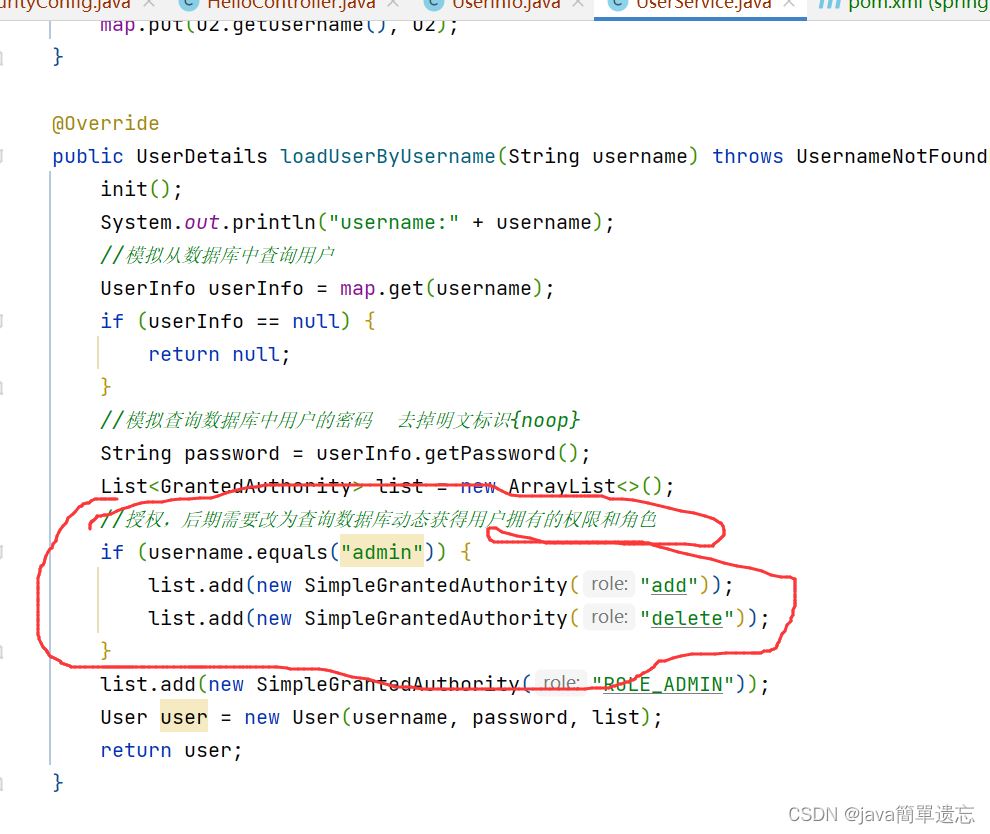
package com.by.service;
import com.by.pojo.userinfo;
import org.springframework.beans.factory.annotation.autowired;
import org.springframework.security.core.grantedauthority;
import org.springframework.security.core.authority.simplegrantedauthority;
import org.springframework.security.core.userdetails.user;
import org.springframework.security.core.userdetails.userdetails;
import org.springframework.security.core.userdetails.userdetailsservice;
import org.springframework.security.core.userdetails.usernamenotfoundexception;
import org.springframework.security.crypto.bcrypt.bcryptpasswordencoder;
import org.springframework.security.crypto.password.passwordencoder;
import org.springframework.stereotype.component;
import java.util.arraylist;
import java.util.hashmap;
import java.util.list;
import java.util.map;
@component
public class userservice implements userdetailsservice {
@autowired
private passwordencoder passwordencoder;
//模拟向数据库中插入数据
public map<string, userinfo> map = new hashmap<>();
public void init() {
userinfo u1 = new userinfo();
u1.setusername("admin");
u1.setpassword(passwordencoder.encode("123"));
userinfo u2 = new userinfo();
u2.setusername("user");
u2.setpassword(passwordencoder.encode("123"));
map.put(u1.getusername(), u1);
map.put(u2.getusername(), u2);
}
@override
public userdetails loaduserbyusername(string username) throws usernamenotfoundexception {
init();
system.out.println("username:" + username);
//模拟从数据库中查询用户
userinfo userinfo = map.get(username);
if (userinfo == null) {
return null;
}
//模拟查询数据库中用户的密码 去掉明文标识{noop}
string password = userinfo.getpassword();
list<grantedauthority> list = new arraylist<>();
//授权,后期需要改为查询数据库动态获得用户拥有的权限和角色
if (username.equals("admin")) {
list.add(new simplegrantedauthority("add"));
list.add(new simplegrantedauthority("delete"));
}
list.add(new simplegrantedauthority("role_admin"));
user user = new user(username, password, list);
return user;
}
public static void main(string[] args) {
for (int i = 0; i < 3; i++) {
string password="123456";
/**
* bcryptpasswordencoder是spring security
* 提供的一个加密的api
*/
bcryptpasswordencoder bcryptpasswordencoder = new bcryptpasswordencoder();
string hashpassword = bcryptpasswordencoder.encode(password);
system.out.println(hashpassword);
boolean flag = bcryptpasswordencoder.matches("123456", hashpassword);
system.out.println(flag);
}
}
}三、测试
可以看出admin有add方法的访问权限,而user则没有add方法的访问权限
3.1 user测试
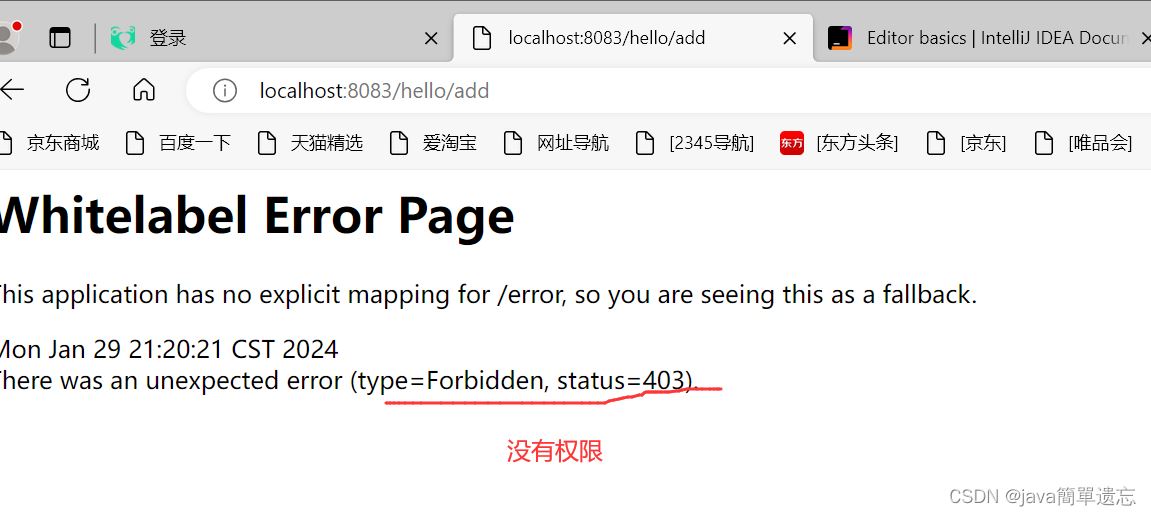
3.2 admin 测试
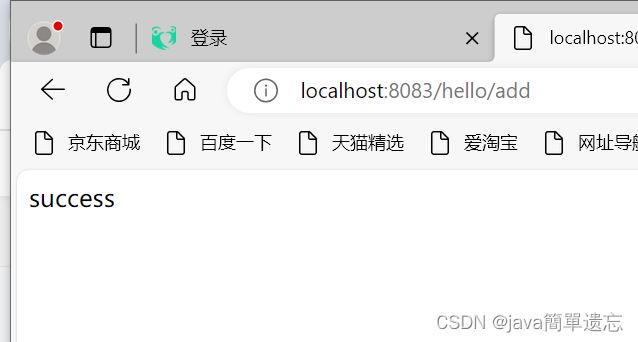
四、退出登录功能
用户完成登录后spring security框架会记录当前用户认证状态为已认证状态,即表示用 户登录成功了。
那用户如何退出登录呢?我们可以配置类中进行如下 配置:
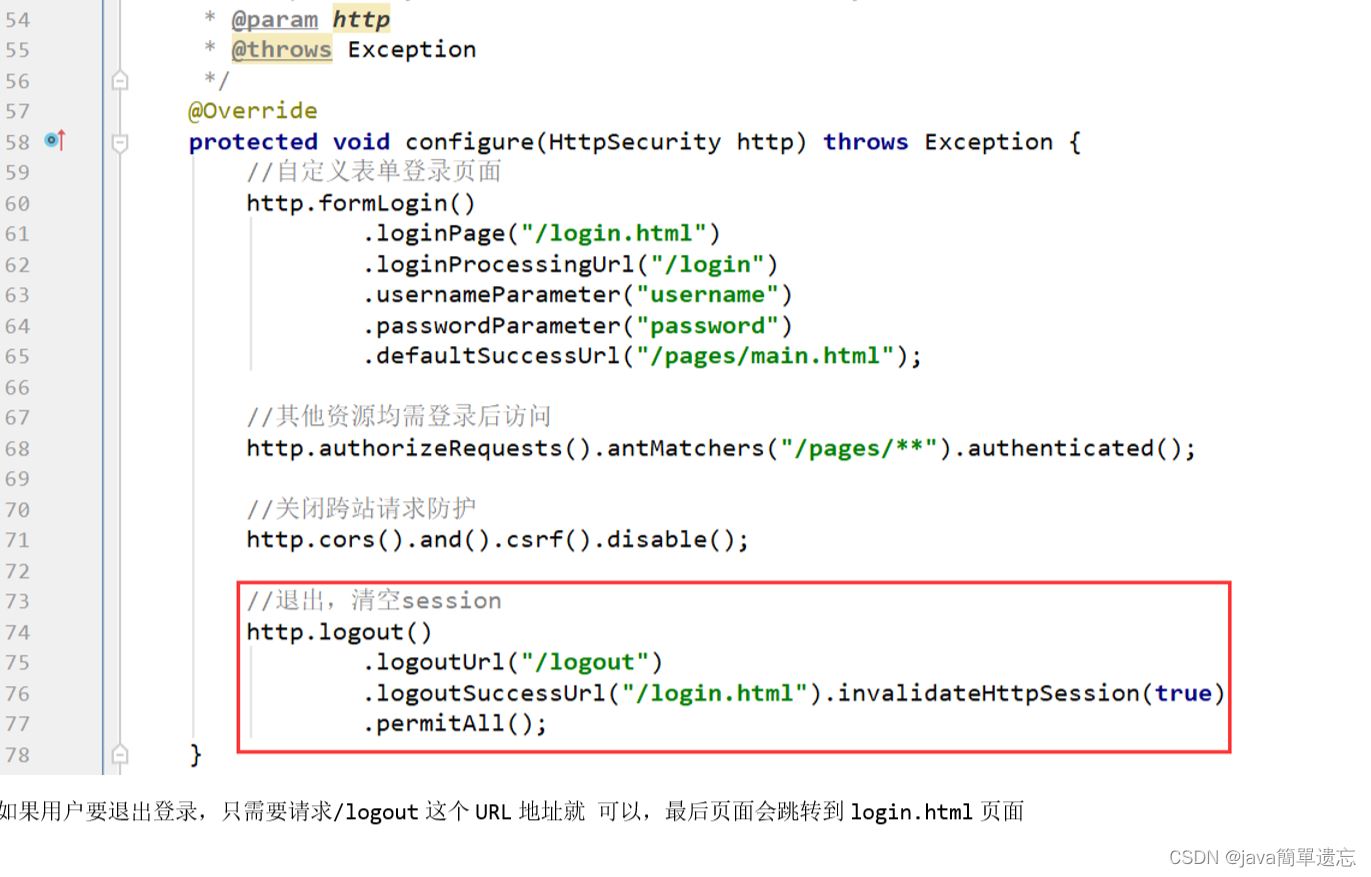
package com.by.config;
//import com.by.service.userservice;
import com.by.service.userservice;
import org.springframework.beans.factory.annotation.autowired;
import org.springframework.context.annotation.bean;
import org.springframework.context.annotation.configuration;
import org.springframework.security.config.annotation.authentication.builders.authenticationmanagerbuilder;
import org.springframework.security.config.annotation.method.configuration.enableglobalmethodsecurity;
import org.springframework.security.config.annotation.web.builders.httpsecurity;
import org.springframework.security.config.annotation.web.builders.websecurity;
import org.springframework.security.config.annotation.web.configuration.websecurityconfigureradapter;
import org.springframework.security.crypto.bcrypt.bcryptpasswordencoder;
import org.springframework.security.crypto.password.passwordencoder;
/**
* spring security 核心配置
*/
@configuration
@enableglobalmethodsecurity(prepostenabled = true)//开启权限注解支持
public class websecurityconfig extends websecurityconfigureradapter {
@autowired
private userservice userservice;
@autowired
private passwordencoder passwordencoder;
/**
* 配置认证信息的来源
* authenticationmanagerbuilder认证管理器
*/
@override
protected void configure(authenticationmanagerbuilder auth) throws exception {
// 配置认证提供者
auth.userdetailsservice(userservice).passwordencoder(passwordencoder);//配置认证提供者
super.configure(auth);//密码
}
/**
* 配置web的安全(忽略的静态资源)
*
* @param web
* @throws exception
*/
@override
public void configure(websecurity web) throws exception {
//web.ignoring().antmatchers("/pages/a.html","/pages/b.html");
//web.ignoring().antmatchers("/pages/**");
//指定login.html页面可以匿名访问
web.ignoring().antmatchers("/login.html");
}
/**
* 配置http请求的安全(认证、授权、退出)
* httpsecurity 用于构建一个安全过滤器链 securityfilterchain
*
* @param http
* @throws exception
*/
@override
protected void configure(httpsecurity http) throws exception {
// super.configure(http);
http.formlogin()
.loginpage("/login.html")// 默认页面
.loginprocessingurl("/login")//请求
.usernameparameter("username")
.passwordparameter("password")
// 请求成功后访问哪个路径
.defaultsuccessurl("/index.html",true);
//权限配置
http.authorizerequests()
//.antmatchers("pages/a.html").authenticated()
.antmatchers("/pages/b.html").hasauthority("add")
/**
* 拥有role_admin可以访问d页面
* 注意:此处虽然写的是admin,但是框架会自动添加前缀role_
*/
.antmatchers("pages/c.html").hasrole("admin")
// 其他资源均需要登录后访问
.anyrequest().authenticated();
/**
* 退出登录
*/
http.logout()
.logouturl("/logout")
.logoutsuccessurl("/login.html").invalidatehttpsession(true);
// super.configure(http);
//关闭跨站请求防护
http.csrf().disable();
}
/**
* 配置加密对象
* @return
*/
@bean
public passwordencoder passwordencoder(){
return new bcryptpasswordencoder();
}
}在a.html 设置一个退出登录的超链接
<!doctype html>
<html lang="en">
<head>
<meta charset="utf-8">
<title>title</title>
</head>
<body>
我是b.html
<a href="/logout" rel="external nofollow" >退出登录</a>
</body>
</html>测试
登录后访问localhost:8083/pages/a.html 然后点击退出登录。
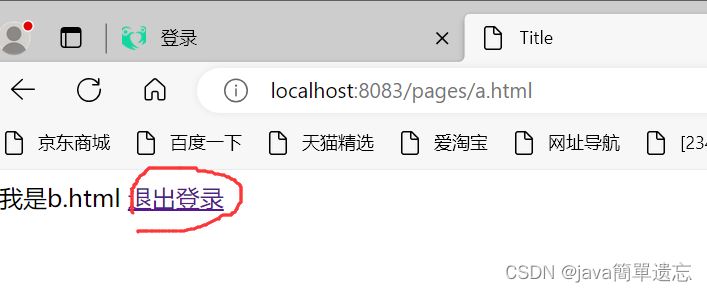
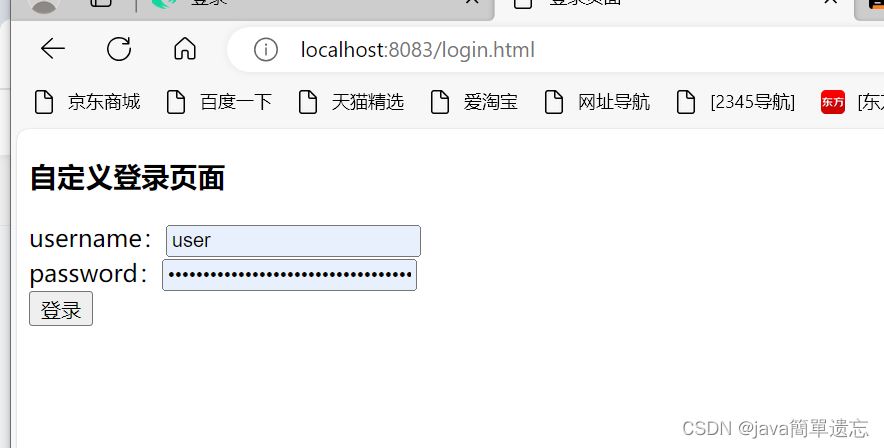
如果用户要退出登录,只需要请求/logout这个url地址就 可以,最后页面会跳转到login.html页面
总结
以上为个人经验,希望能给大家一个参考,也希望大家多多支持代码网。





发表评论